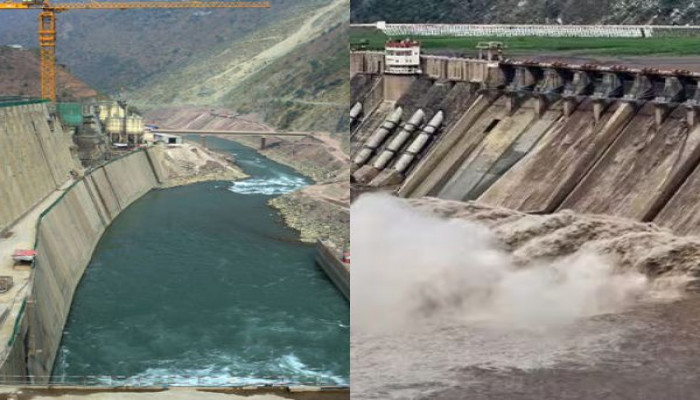India begins work on hydroelectric projects after IWT suspension with Pakistan
- In Reports
- 06:56 PM, May 05, 2025
- Myind Staff
India suspended the Indus Waters Treaty of 1960 after the terror attack in Pahalgam. The treaty governs the utilisation of the Indus River and its tributaries by India and Pakistan. Using the Baglihar Dam on the Chenab River, India also stopped the water flow into Pakistan.
India has started activities to augment reservoir holding capacity at two hydroelectric projects in Jammu and Kashmir. This comes after India suspended the longstanding Indus Waters Treaty following the Pahalgam terror attack.
The Indus Waters Treaty, signed in 1960, regulates how India and Pakistan use the Indus River and its tributaries. The treaty ensures water supply for about 80 per cent of Pakistani farms. India suspended the treaty after the April 22 terror attack in Pahalgam, which killed 26 tourists.
India also cut water flow to Pakistan through the Baglihar Dam on the Chenab River on Sunday. India now plans to carry out similar measures at the Kishanganga Dam on the Jhelum River.
On Thursday, India began a “reservoir flushing” procedure to remove sediment. NHPC Ltd, India’s largest hydropower company, and the authorities in the federal territory of Jammu and Kashmir conducted the process, according to three sources familiar with the matter who spoke to Reuters.
This action might not immediately affect Pakistan’s water supply. However, if India launches similar actions at other hydroelectric projects, it could eventually impact the supply. Pakistan heavily depends on rivers that flow through India for irrigation and hydropower generation. There are over six such Indian projects in Jammu and Kashmir.
India carried out the flushing process at the Salal and Baglihar hydro projects. These projects were built in 1987 and 2008. This marked the first time India conducted such work there, since the treaty had previously blocked it. Sources said India did not inform Pakistan about the activity.
The flushing operation ran for three days starting May 1, the sources said. “This is the first time such an exercise has taken place and will help in more efficient power generation and prevent damage to turbines,” a source told Reuters. “We were also asked to open the adjustable gates for cleaning, which we did from May 1.”
In a hydropower project, flushing involves almost emptying the reservoir to remove sediment, which builds up over time and reduces power output. Two sources said the 690 MW Salal project was delivering far less power than its capacity because Pakistan had previously prevented such flushing.
“Flushing is not a common thing because it leads to a lot of water wastage,” one source said. “Downstream countries are expected to be informed in case it leads to any inundation.”
After the Pahalgam attack, India launched several punitive measures against Pakistan. Pakistan denied responsibility for the attack and threatened an “all-out war” if India violates the Indus Waters Treaty. India also suspended routine water sharing and flood alerts with Pakistan.
The Baglihar Dam has long been a point of contention between India and Pakistan. Pakistan previously sought World Bank arbitration over it. The Kishanganga Dam also faced legal and diplomatic scrutiny because of its impact on the Neelum River.







Comments